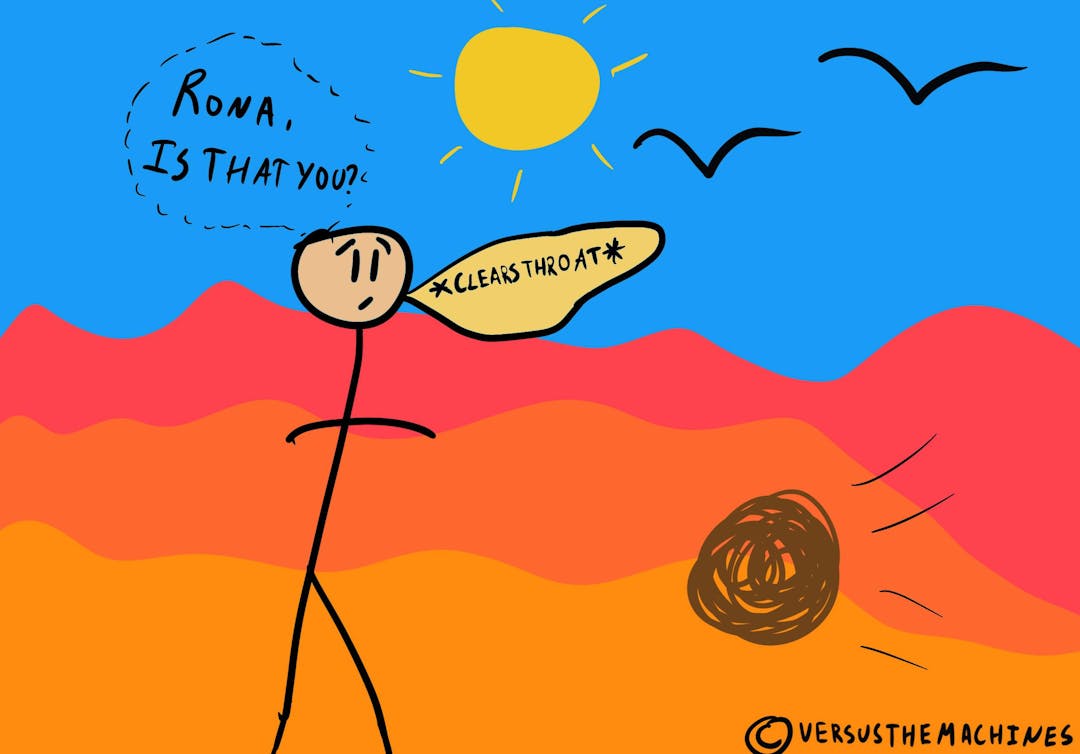Encouraging Social Compliance During COVID-19
Countless generals and management gurus have pontificated about how to organize armies and businesses. Some of them have even suggested ways to instruct their armies, be they corporate or military. These rules have broadly seeped into common practice regarding managing groups of all sizes. Sadly, these rules were not made for lay citizens — organizational structures and power hierarchies differ, and their rules need not apply.
Getting the public to follow instructions is not easy. This is even more apparent during the COVID-19 crisis, be it at home, work, in towns, cities, and/or countries. We need an updated social instruction list for the COVID-19 era, and behavioral science can help us. Here is a checklist for creating improved social instructions:
1. Specific and actionable
Specificity on what behaviors to take up — and why these actions are important — can promote good decision-making. For example, research published by the National Bureau of Economic Research suggests that when specific and personalized price information on the cost of prescriptions were provided to customers, their likelihood of switching plans increased and annual consumer costs decreased.1
Similarly, during the initial days of the COVID-19 crisis, specific and actionable instructions might have reduced the spread of the virus and saved lives — instructing people to wash their hands for two minutes every two hours, or explicitly suggesting handshakes be replaced with fist-bumps, may have been more effective than just suggesting people stop shaking hands.2
Behavioral Science, Democratized
We make 35,000 decisions each day, often in environments that aren’t conducive to making sound choices.
At TDL, we work with organizations in the public and private sectors—from new startups, to governments, to established players like the Gates Foundation—to debias decision-making and create better outcomes for everyone.
2. Easy to follow
To suggest that instructions ought to be easy to follow almost seems tautological. However, simplicity and easiness may be difficult to achieve. Instructing everyone to maintain a six feet gap from others around them may not be easy to follow despite the relative simplicity of the task. Picture a densely populated country, city, slum, or even people living in high-rises. While those living in these conditions may fully understand the importance of keeping distance, the realities of their living conditions might make it difficult for them to follow social distancing. Instructions that are impossible to follow may actually cause stress, and the ‘effort overload’ does not help.3
Further, economic stress and job loss and other challenges posed by the virus have caused enormous mental strain, and our health systems have not been able to cope. Expecting ordinary acceptance of instructions in extraordinary times may be a little harsh. The solution lies in a better understanding of how to tailor instructions to different groups of people.
3. Well-framed
In their groundbreaking study in 1979, Tversky and Kahnemann, two pioneers of behavioral science, showed that the description of situations or choices affect the actions that we take. Policymakers and marketing gurus alike have used this principle, named ‘framing’, to great effect.4,5 This type of human behavior forms the basis for prospect theory, which says that a loss is perceived as more significant, and therefore more worthy of avoiding, than an equivalent gain.
Similarly, using different wordings, settings, and situations can generate markedly different levels of adherence to instructions. People are more likely to follow instructions that urge them to do something that is 95% successful rather than something that is ‘just’ 5% unsuccessful.
4. Easy to comprehend
Cognitive overload theory (COT), a concept from instruction design that explains how the cognitive load produced by learning tasks can impede one’s ability to process new information and to create long-term memories, can be applied towards designing effective instructions. According to COT, when faced with new information or instruction, our comprehension is a function, in part, of the effort exerted by the individual in understanding (intrinsic load), and the way information or tasks are presented.6
While it is true that we may never find the perfect instruction delivery mechanism, be it through a news bulletin, a presidential address, pamphlets, or a combination of several potential mediums, the aim must be to increase ease of recall. Of course, compliance can be a result of both conscious recalls of instructions or a result of a habit, much like following instructions while learning to drive.
The AI Governance Challenge
However, too many instructions given too often can have a negative effect, making it difficult to prioritize or follow any of the rules at all. Choice overload bias kicks in when too many options or instructions are presented, creating a situation similar to our inability to make sensible choices when faced with countless options, like in supermarket aisles. When it comes to protracted challenges like the COVID crisis, decision fatigue sets in quickly as we are called upon to make more and more decisions of extraordinary significance in a compressed period of time.
Our decisions change as well as our ability to make trade-offs, and we are no longer able to effectively differentiate between positive and negative attributes. We thus avoid making decisions, and suffer from reduced willpower, leading to choices with negative long-term outcomes.7,8
5. Embedded in trust
Crafting intelligent instructions does not guarantee compliance. A key reason compliance is often low is due to the lack of trust in the person or organization issuing instructions. Research led by Harvard University’s Marcella Alsan showed that African American men, who are normally mistrustful of the healthcare system, were more likely to trust doctors of their own race. This increase in trust led to improved utilization rates for preventative health, including receiving the seasonal flu vaccine.9 This suggests that building trust alongside, or even prior to delivering instructions, will go a long way in ensuring compliance.
6. Censure and penalties
Censure and punishment, in varying degrees, can compel people to obey rules. For example, during curfews imposed in India to control the spread of COVID-19, citizens found violating rules that aimed to restrict movement (and those not using masks) were penalized, arguably increasing overall compliance.
Very often, society itself can be co-opted into ensuring that instructions are followed. A simple example of such behavior is when restaurants refuse to entertain patrons not wearing masks. But, for any punishment to work or have a lasting impact, it needs to be credible – the expected loss of being caught and penalized for non-conformity should be high enough to ensure compliance.10
7. Leveraging networks
Research has shown that in closely connected communities, ‘peer effects’ (similar to bandwagon effect), can help the spread of information, and also potentially improve compliance. What our friends do matters to us; what celebrities do might matter more. Twitter reported that a tweet promoting immunization was more likely to be liked or retweeted if it was endorsed by a celebrity, especially if they had tweeted in their own voice rather than citing sources.11 Allies in improving compliance can be found in counterintuitive social relationships as well.
Recent research in India found that a mother-in-law can have a significant detrimental impact on their daughter-in-law’s access to and formation of social networks. The ‘Curse of the Mummyji’, it seems, is very real.12 Yet, counterintuitively so, opportunities might exist when tapping into the same relationship to ensure their daughter-in-law’s compliance in positive ways – for instance, a mother-in-law can be co-opted into government healthcare plans to modify their daughter-in-law’s sanitation and hygiene practices.
8. Evidence, Testing, Feedback
There is no doubt that large scale experiments and randomized control trials (RCTs) often generate evidence that helps formulate public policy. However, running large experiments takes months, if not years, to yield results that are powerful (yet not necessarily universally applicable). And they can be expensive and ill-advised in situations that need quick action. Existing evidence and new ideas can, however, be piloted on smaller-scales. Feedback loops and design thinking can be used to improve compliance with rules and instructions. Prototyping and piloting all aspects of instructions can go a long way in making them more effective.
Closing remarks
This checklist is by no means a silver bullet that can guarantee that people follow rules or instructions. It does not also mean to suggest that there is no wisdom in the works of management and organizational behavior specialists. Rather, behavioral science is a powerful addition to the existing toolkit, and this checklist can be a handy companion.
References
1. Jeffrey R. Kling, Sendhil Mullainathan, Eldar Shafir, Lee Vermeulen, Marian Wrobel (2011). Comparison Friction: Experimental Evidence from Medicare Drug Plans. National Bureau of Economic Research Working Paper. No. 17410
2. Multiple authors (2020). Increasing Adherence to Covid-19 Guidelines: Lessons from Existing Evidence. J-PAL Policy Briefs
3. Multiple authors (2020). Increasing Adherence to Covid-19 Guidelines: Lessons from Existing Evidence. J-PAL Policy Briefs
4. Daniel Kahneman, Amos Tversky (1979). Prospect theory: An analysis of decision under risk. Econometrica. 47, 263-291.
5. Daniel Kahneman, Amos Tversky (1981). The framing of decisions and the psychology of choice. Science. Vol. 211, Issue 4481, pp. 453-458
6. Abhijit Ramalingam, Antonio J. Morales, James M. Walker (2017). Varying experimental instructions to improve comprehension: Punishment in public goods games. Journal of Behavioral and Experimental Economics. Volume 73, April 2018, Pages 66-73
7. Darrell L. Butler, Steven K. Jones (1986). Instructions to Human Subjects: Effects of Repetition on Task Errors. Perceptual and Motor Skills. Volume: 63 issue: 2, page(s): 451-454
8. Weizhen Xie, Stephen Campbell, Weiwei Zhang (2020). Working Memory Capacity Predicts Individual Differences in Social Distancing Compliance during the COVID-19 Pandemic in the U.S. PsyArXiv Preprints
9. Marcella Alsan, Owen Garrick, Grant Graziani (2019). Does Diversity Matter for Health? Experimental Evidence from Oakland. American Economic Review. Col 109. No. 12. Pp. 4071-4111
10. Aurélie Ouss, Alexander Peysakhovich (2015). When Punishment Doesn’t Pay: Cold Glow and Decisions to Punish. The Journal of Law & Economics. Vol. 58, No. 3, pp. 625-655
11. Multiple authors (2020). Increasing Adherence to Covid-19 Guidelines: Lessons from Existing Evidence. J-PAL Policy Briefs
12. Anukriti S, Catalina Herrera-Almanza, Mahesh Karra, Praveen Pathak (Forthcoming). Curse of the Mummy-ji: The Influence of Mothers-in-Law on Women in India. American Journal of Agricultural Economics
About the Author
Siddharth Ramalingam
Siddharth’s diverse education and experience feed his interest in the applicability of behavioral science in understanding our world and solving big problems. His work encompasses international development, consulting, finance, and social innovation. Apart from an MPA from Harvard University, he also has graduate degrees in Political Theory, Human Rights Law, Management, and Economics.





